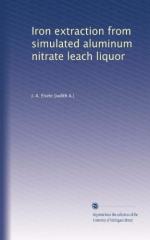|
This section contains 636 words (approx. 3 pages at 300 words per page) |

|
Iron is the fourth-most common element in Earth's crust, and the second-most common metal after aluminum. Its abundance is estimated to be about 5%. Sampling studies indicate that portions of Earth's core consist largely of iron, and the element is found commonly in the Sun, asteroids, and stars.
The chemical symbol for iron, Fe, comes from the Latin name for the element, ferrum. The most common ores of iron are hematite and limonite (both primarily ferric oxide; Fe2O3) and siderite iron carbonate (FeCO3). An increasingly important source of iron for commercial uses is taconite, a mixture of hematite and silica. Taconite contains about 25% iron. The largest iron resources in the world are found in China, Russia, Brazil, Canada, Australia, and India.
The traditional method for extracting pure iron from its ore is to heat the ore in a blast furnace with limestone and coke. The coke reacts with...
|
This section contains 636 words (approx. 3 pages at 300 words per page) |

|


